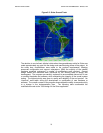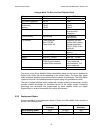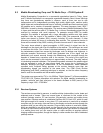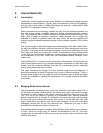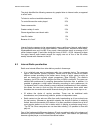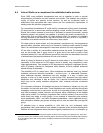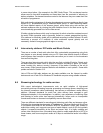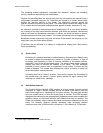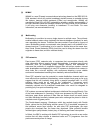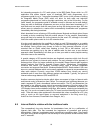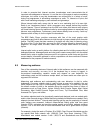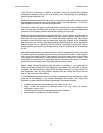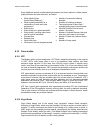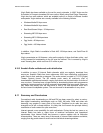
DIGITAL RADIO GUIDE INTERNET RADIO
80
The streaming system architecture comprises four elements: capture and encoding,
serving, distribution and delivery and media player.
Capture and encoding takes the source audio from the microphone and exports it into a
compressed (encoded) computer file. These files are stored on a content server which
controls the real-time delivery of the stream. The distribution channel (usually the
Internet) connects the server to the player. The media player renders the media on the
PC or another device (hand-held wireless devices, games consoles, interactive TV, etc).
As Internet is overlaid on telecommunications infrastructure, IR is now widely available
via a variety of two-way communication networks, both wired and wireless. narrow-band
(dial-up) at home and broadband connections in offices, via WLAN hot spots in airports,
congress centres and other public places. The number of listening hours is staggering.
Broadband access is obviously a big plus and some of the streams are so good you can
enjoy them over your home stereo system.
IR services can be delivered in a variety of configurations ranging from direct server-
client to podcasting.
(1) Server-client
Unicasting is a classical approach to radio streaming. Requests from clients (users)
to receive a stream are managed by a server or a cluster of servers. In case of
clustering, load balancing is used to improve reliability of the stream delivery,
especially if one of the servers breaks down. The server cluster feeds a common
Internet line used to transmit the streams to the clients. The total bandwidth
provided by such a server farm is proportional to the number of clients and the
bitrate of streams. This means that doubling the number of clients or bitrate will
double the system capacity and cost.
Unicasting also has a "scaling" problem. Since all the streams are transmitted to
the Internet from one source, a server quickly reaches its upper capacity limit,
resulting in a "server busy" message.
(2) Distribution networks
The Content Delivery Network (CDN) consists of a large number (typically several
thousand) of "edge"
14
servers situated around the world. Each server uses the
same home page and is uploaded with the same content. The user gets content
from the nearest server, so that the access delay is minimal. The CDN approach
distributes the load among the geographically separated servers and increases the
possible number of concurrent requests and streams that may be handled. The
CDNs can potentially cater to several thousand simultaneous streams but are very
costly. For example, Akamai's globally distributed edge computing platform
comprises more than 15,000 servers in more than 1,100 networks in 70 countries.
14
The word "edge" is used here to mean "close to the user".




